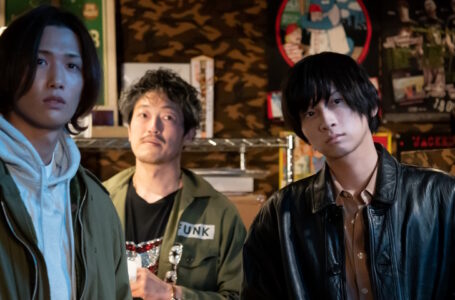Our favourite discoveries of mid 2021: manga, J-drama and music
The front half of 2021 has been packed with great pieces of media to experience, whether they’re video games, anime or all manner of other things. And here I am still catching up on things from a while back, too!
Last time, we looked at my favourite video game and anime discoveries up until this point this year. Let’s wrap up my findings for the middle of this year within the categories of manga, J-drama and music; once again, these didn’t necessarily originate in 2021, but I finally got to enjoy them for the first time in the first half of this year.
If you’ve checked out both articles, then I thank you, and I hope it has provided you with something worth looking into!
Manga
Reimei no Arcana
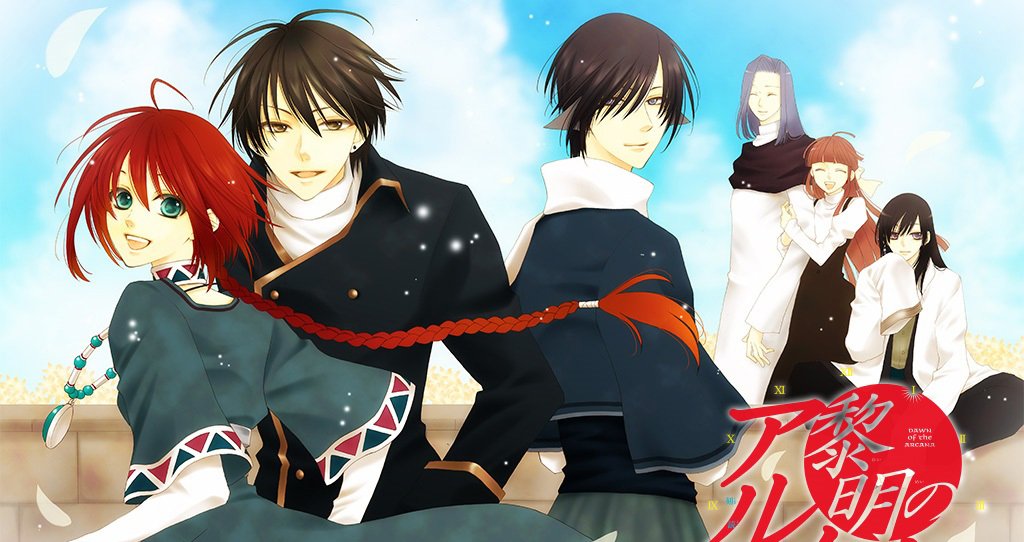
Starting off the manga section and it is a theme across both of my picks — these are throwback titles. Reimei no Arcana released all the way back in 2009, and concluded in 2013. It is a shojo fantasy manga created by Touma Rei, whose art is absolutely gorgeous. On top of that, the storytelling is engrossing enough that its thirteen volumes are over far too quickly.
It is interesting to point out how this manga came at a time where two very similar manga series did, namely Yona of the Dawn and Akagami no Shirayuki-hime. What is the connection? Well, mostly down to all of their heroines being red-haired to indicate a lower status (Respect the redheads! – Ed.), and their stories revolving around discrimination. However, Reimei no Arcana has yet to see an anime adaptation, unlike the other two — and this is a great injustice. Just look at those intricate character designs!
Reimei no Arcana features a medieval fantasy setting where prejudice continues to hurt the relations between two kingdoms. In order to bring peace to the realm, our main character Nakaba, a princess of Senan who is feared for her bloodline, is forced into an arranged marriage with the second prince of Belquat, Caesar.
The series’ politics and world building is well realised, and the main love triangle is a slow burn, building upon initial disdain and distrust, and greatly varying between the two extreme emotions of hatred and love.
The stakes are raised high in Reimei no Arcana, with revolutions, revenge and betrayals all affecting its characters and world the further the story progresses. Not only do we have certain revelations to look forward to, but Nakaba as its heroine and her development is one of the best within the shojo genre. Strong willed, vocal, and willing to stand by her ideals, she is a captivating main character.
Additionally, her servant, Loki, a half-human, half-animal sub-species known as Ajin, is a fan favourite for his immediately sympathetic and considerate personality — a definite contrast to Caesar. His character development is the cream of the crop within the title; gradually he comes to realise how awfully sad and wrong his life has been up until an important turning point. It’s extremely satisfying to see him gradually improve.
The vast majority of Reimei no Arcana’s cast have their own moments to shine, and feel ever so real and complex. They each have their own motivations and ideals that oppose other characters’ own aspirations, and all this adds to the overarching themes of discrimination and a world torn by indifferences and prejudices.
The mix of action, drama and fantasy makes Reimei no Arcana stand out, and with a story very much grounded in reality with its obvious parallels to our own real-world situations, it deserves far more recognition than it currently gets. And its ending is well worth the slow journey, being both shocking and highly emotional. What a send-off.
You can start by purchasing its first volume on Amazon.
Apocalypse no Toride
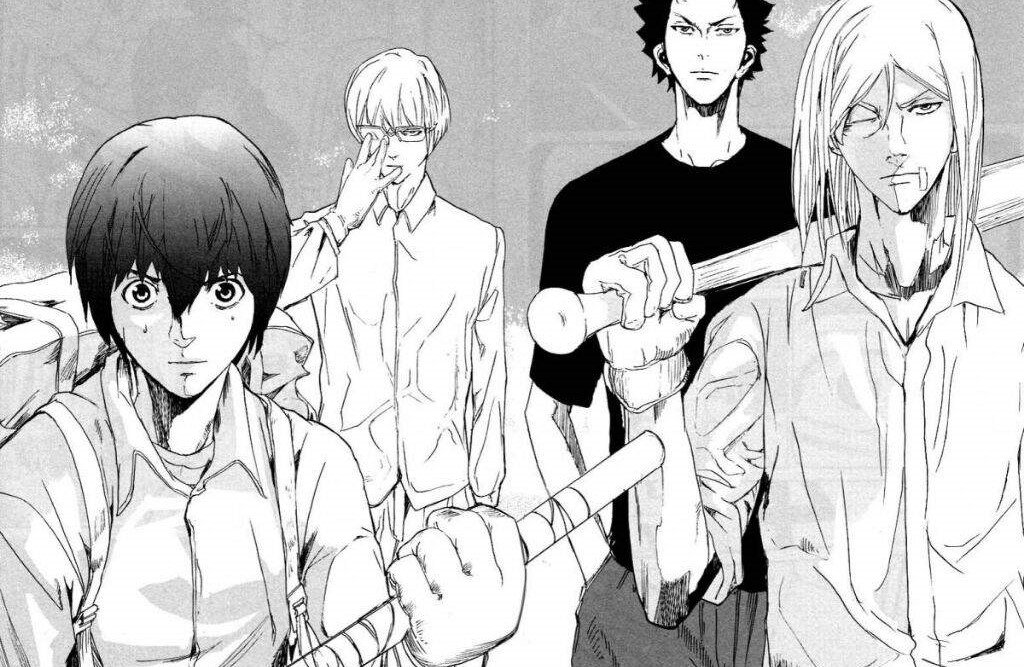
Apocalypse no Toride is a near-masterpiece that unfortunately falls at the last hurdle because of its rushed and abrupt ending; it left plenty more development that could have been expanded upon in certain departments.
From plot threads that were completely ignored by its last chapters to certain explanations being shoved under the rug simply because its runtime did not accommodate for any of it, Apocalypse no Toride was still an absolute thrill ride from start to finish.
It is a shame its ending came far too soon due to being axed for poor sales, because Apocalypse no Toride is one of the best stories within the zombie manga genre, and even outside of the medium. Its take on the format is refreshing, with a certain edge to it considering its rough setting in a prison.
Our main character, Yoshiaki Maeda, is sentenced to an indefinite amount of time for a crime he did not commit. The archetypes are prevalent — Maeda is our coward-turned-hero, Mitsuru is our intellectual who feels superior to others, Gou is the silent yet strong and capable fighter, and my personal favourite Masafumi is the cunning and cocky leader type.
Each have their own epic moments that bring a spotlight to their strengths and abilities; their growth as a team and their individual opportunities for character development are highlights of the manga. But the series’ strongest merit is its always evolving art that delivers strikingly uncomfortable zombie designs that continuously alter and adapt as the story progresses. Some are downright nightmare fuel, remaining just as memorable as Junji Ito’s most disturbing pieces. And I believe that comparison is saying something.
On the topic of its zombies, another distinctive element of Apocalyse no Toride is how ruthlessly capable its undead horrors are. Being able to run, dodge, and work as a team makes the threat of this zombie outbreak the highest and most terrifying ever seen; it truly feels like a hopeless predicament.
The plot revelations concerning the zombie virus have all been so different and unique, continuously evolving into something more threatening, and its characters’ layers that are gradually shown through their backgrounds and developments makes for a main group we support and care about. You’ll be flicking through its pages desperately to see a satisfying ending for them. I cannot recommend this one enough — even if that satisfying ending never quite comes.
Grab the first volume (digitally) of Apocalypse no Toride on Amazon now.
J-Drama
Crazy for Me
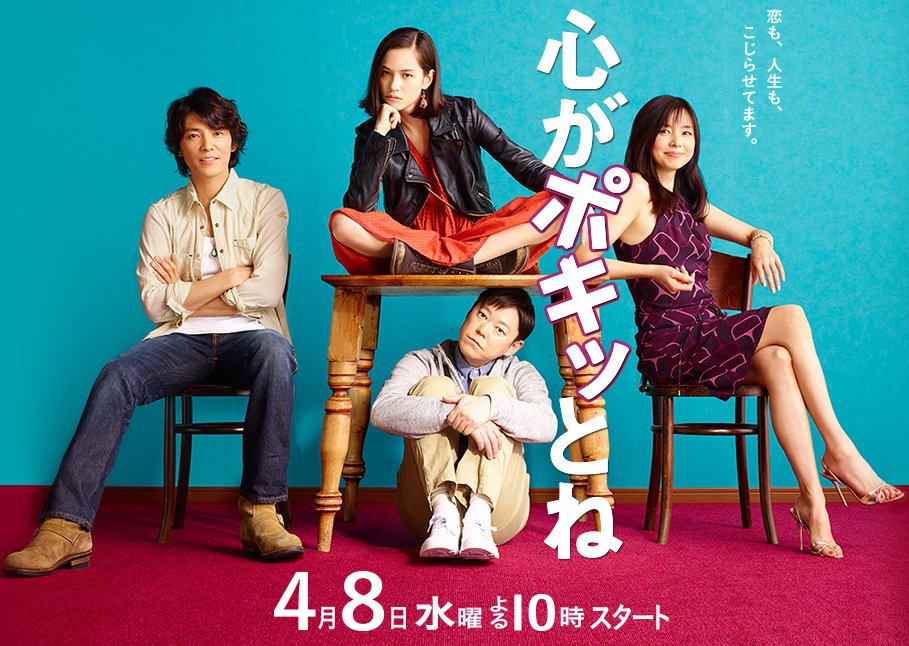
Crazy For Me aired when I was deep into J-dramas back in 2015, but at the time I didn’t explore it. As of 2021, though, it’s been the J-drama to pull me back into this old hobby of mine thanks to what it represented and delivered in a mere 10 episodes.
Our main character, Haruta Kojima, has become emotionally distressed after being overworked in his job and getting divorced from his wife at the same time. He quits his job and ends up homeless, but is taken in by a kind antique furniture store owner, Shin Otake. Haruta starts to attend therapy to quell his anxieties and mental strain, but of course, he is not the only one going through hard times.
A lot of the humour is derived from this set-up of its main characters all laying out their thoughts and feelings about their hardships to the same therapist. And alongside this is how bizarre of a grouping these unexpectedly linked individuals are, especially as we see them attempt to make new or old connections with one another under the same roof.
But it is the surprising delicacy with which Crazy for Me explores humanity’s deep, tormented struggles that makes it a worthwhile watch. While the majority of its main characters suffer from a mental illness, such as co-dependency or obsession with others, inability to feel anger or rage, or an inability to understand the value of romantic attachment, the show has a surprisingly hopeful and positive approach to these real life issues. And as such, I find the central message of Crazy For Me particularly captivating and enriching.
Its story, centred on four seemingly normal yet broken individuals, could be about any one of us — and it never falters in its positive approach to how people can always change and improve their current lives no matter who they are, or how old they are.
And with an overall happy ending I took great enjoyment of with its concluding pairings — if you already know of my preference of otome archetype, then you may get why. And the journey to this destination is filled with laughs, tears, and uncomfortably bonkers moments. Just as a J-drama should be.
You can watch Crazy For Me on Amazon.
Alice in Borderland
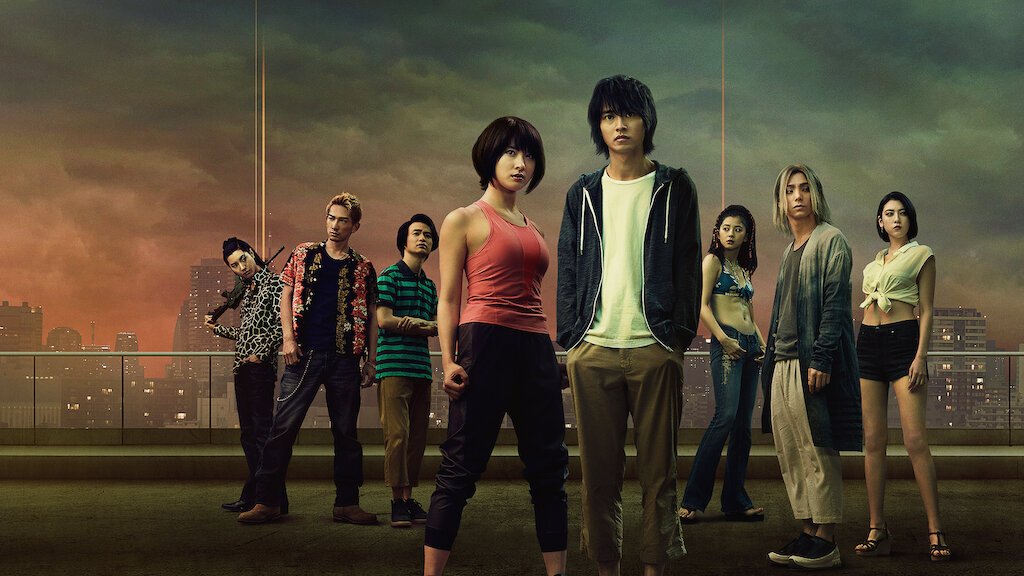
Alice in Borderland is a manga that was serialised from 2010 to 2016 that received an 8 episode, live-action adaptation in December of 2020. Bringing worldwide attention to the title, the show had mostly positive reception, and it is not hard to see why. Its director, Shinsuke Sato, excels at bringing manga such as Gantz, Bleach and Kingdom to live action, and there are some brilliant casting decisions — Kento Yamazaki and Tao Tsuchiya bring their A-game to their roles with so much chemistry between the two — along with incredible cinematography, seamless graphical effects and wonderful visuals.
The psychological horror aspect, mature themes and overall thriller plot makes Alice in Borderland very special. The characters who manage to live go through an overwhelming amount of growth and bonding, and experience horrors even outside of the entertainingly horrifying death games. Betrayal, divisions, and the fight for leadership are all understandable and expected elements in a post-apocalyptic world where death is around every corner, and when people become each other’s natural enemy. The stakes are high in this one, and the result is well worth the amount of pain you’ll experience by aligning yourself with any of its characters.
Its impressive production was the cherry on top of an already appealing and promising source material. Alice in Borderland is understandably compared to the 1997 movie Cube for its disturbing death games and often brutal, on-screen killings of its characters. In my own mind, I could not help but draw similarities to the escape room video games we have yet to see adapted for the big screen, such as 999, Ever 17 and Parascientific Escape. Witnessing what could be done with such material with live action when in the right hands made me enjoy my time with Alice in Borderland all the more. And with a second season already greenlit, be sure to catch up with the show in the meantime.
Alice in Borderland is available on Netflix.
Kakegurui
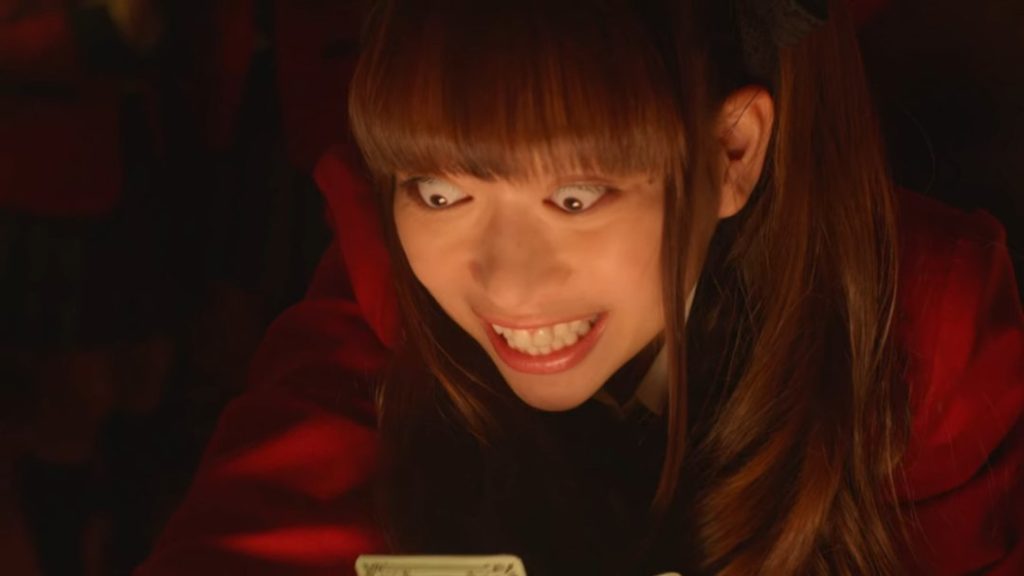
As a massive fan of the original anime of Kakegurui that aired back in 2017, I started sorely missing it this year. So instead of watching any other anime based on the same high-stakes, gambling premise, I turned to its live action to fill the void. And I may very well be the minority here, but I found it well worth giving it a curious look into. Because simply put, those exaggerated faces that attempt to copy the manga panels and animation made for even more laughs than the original format — even if that was never the intention.
Somehow, the over-the-top acting had me even more entertained than both manga and anime, and while this is mainly due to how I have already been exposed to live action adaptations of manga that have failed harder (Ouran High School Host Club will always be my go to as a pointer for this), anything Kakegurui will always be hard to pass up for its material alone. And no matter the negativity surrounding its adaptation, the acting perfectly reflects and captures its source material. Who cares if being faithful to the manga makes the acting cringe-inducing? Bring it on!
And if there is anything remotely creepy about the live action, I find it eerily fitting of the casting decisions made of this adaptation. Minami Hamabe as Yumeko was something else entirely. A picture perfect adaptation in my humble opinion.
Catch it on Netflix.
Music
Takayan
Takayan was a wonderful discovery this year not just for myself but for the majority of his listeners. Actually, I think that’s an understatement, because his songs have touched the hearts of millions of Internet users, with his grounded and genuinely human lyrics exploring many relatable themes such as bullying, suicide, feeling insignificant and weak, and pessimism.
Takayan seems happy to utilise his talent and passion for singing and songwriting as a way to support and help his fans, giving a much-needed boost to our collective confidence, and to be a great reminder of our individual significance and bright future.
Not only this, but his unbelievable control of his tone, from falsetto to rap, is an impressive skillset to wield and exhibit all over YouTube — and it appears to be continuously noticed and deservedly well-received. His unexpectedly distinctive appearance further aids his individuality and particular charisma and charm. Never did I expect to appreciate such a big and strong physique clad in a maid costume. Thanks for everything including that, Takayan.
BTS
If I could talk to my past self of last year and tell her that I would become a fan of BTS soon, past me would have laughed. In no way would I believe I would ever willingly check out a K-pop group, but lo and behold, here I am putting them on shuffle on Spotify on a daily basis.
While their massive blow-up with Dynamite last year caught my attention, it was not until this year’s Film Out, one of their more recent Japanese song releases, that I truly fell head over heels for the group. Some may call it cheating to make BTS appear on this list, but I will call it fate. (You cannot, after all, escape from crossing fates – Ed.)
While Dynamite is keeping me sane and happy this year thanks to its bright visuals, optimistic lyrics and overall happy vibe, their most impressive feat to me is their continuous smashing out of hit after hit the past year or so. Dynamite, Life Goes On, Film Out, and finally Butter. I cannot wait to see what else they’ll deliver us with next.
For anyone who needs to know, RM is my bias.
THE FIRST TAKE YouTube Channel
And we finally come to my last suggestion of the lot, which may very well be just as popular as BTS for how frequently they pop up on my recommendations. This channel could not have appeared at a more appropriate time, what with COVID keeping us all mostly indoors for the majority of the year. And THE FIRST TAKE’s success goes to show this, with over 4 million subscribers at the time of writing this up, and their most popular video being viewed over 140 million times (DISH// with Neko (Cat) for reference).
THE FIRST TAKE says what it is on the tin – it provides us an authentic and genuine look into how your favourite Japanese artist pumps themselves up to belt out their creations — and provides a jolly good bit of sweet and humorous conversation between THE FIRST TAKE’s crew and the artists to show off their personality and approach. It’s all very endearing and feel-good, and even with a few hiccups along the way (namely the above video with KANA-BOON when Maguro forgets his cue) makes for insanely adorable moments that would have otherwise never been captured.
What have been some of your favourite manga, J-Drama and music discoveries in the first half of this year? Why not pen us a letter for the Rice Digital Friday Letters Page telling us all about them?
Join The Discussion
Rice Digital Discord
Rice Digital Twitter
Rice Digital Facebook
Or write us a letter for the Rice Digital Friday Letters Page by clicking here!
Disclosure: Some links in this article may be affiliate links, which means we may earn a small commission if you make a purchase after clicking on them. This is at no additional cost to you and helps support Rice Digital!
- Sigh of the Abyss: Shadow Bonds – Prologue Review - October 7, 2023
- Is She The Wolf? is wickedly addicting TV - October 6, 2023
- The steady consumption of Slow Damage - October 5, 2023




